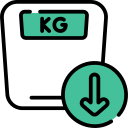Q. How is angioplasty performed, and what is the recovery process like for patients?
Doctor Answer is medically reviewed by SecondMedic medical review team.
Angioplasty is a medical procedure that can bring relief to individuals with blocked or narrowed arteries. Let's walk through how it's done and what the recovery process typically looks like.
The Procedure:
1. Getting Ready: Before angioplasty, you'll have some tests to assess the condition of your arteries. This helps the medical team plan the procedure.
2. Preparation: On the day of the procedure, you'll be asked not to eat or drink for a few hours before. You'll change into a hospital gown and lie on an examination table.
3. Anesthesia: You'll receive local anesthesia, usually in the groin or wrist area, to numb the insertion point. You might also be given a mild sedative to help you relax.
4. Catheter Insertion: A catheter, a thin tube, is inserted through a small incision. It's guided through your blood vessels to reach the blocked or narrowed artery.
5. Angiography: A special dye is injected through the catheter, and X-ray images are taken. This helps the medical team pinpoint the exact location of the blockage.
6. Balloon Inflation: If a balloon angioplasty is planned, a deflated balloon is threaded to the blocked area and inflated. This pushes the plaque against the artery walls, opening up the vessel.
7. Stent Placement: In some cases, a stent is used. It's a small mesh tube that's expanded at the blockage site to hold the artery open.
8. Completion and Closure: Once the procedure is completed, the catheter is removed, and the insertion site is closed, often with a small stitch or a special closure device.
The Recovery Process:
1. Observation: After angioplasty, you'll be monitored for a few hours in a recovery area. Your vital signs will be checked regularly.
2. Rest: You'll be advised to rest for the remainder of the day. It's essential to take it easy.
3. Medications: You might receive medications to prevent blood clots or reduce cholesterol levels. Follow your doctor's prescriptions diligently.
4. Follow-Up: You'll schedule a follow-up appointment to check your progress and discuss any concerns or questions.
5. Lifestyle Changes: Your doctor will likely recommend lifestyle changes like a heart-healthy diet, regular exercise, and quitting smoking to maintain a healthy heart.
6. Recovery Timeline: Your recovery time can vary, but many people can resume normal activities within a few days to a week.
7. Long-Term Care: Regular check-ups are essential to monitor your heart health and the effectiveness of the procedure.
Remember, recovery experiences can differ from person to person. It's vital to follow your doctor's advice and attend all follow-up appointments. Angioplasty can be a life-changing procedure, giving you the opportunity to enjoy a healthier, more active life.











